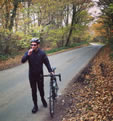When I found out that there was an early season short sportive setting off from just round the corner from my house, I thought "how convenient" and immediately signed up. At just under 40 miles the Battle of Bradfield (B.O.B.) sportive didn't sound too taxing, but what it lacked in length it made up for in quantity of climbs.
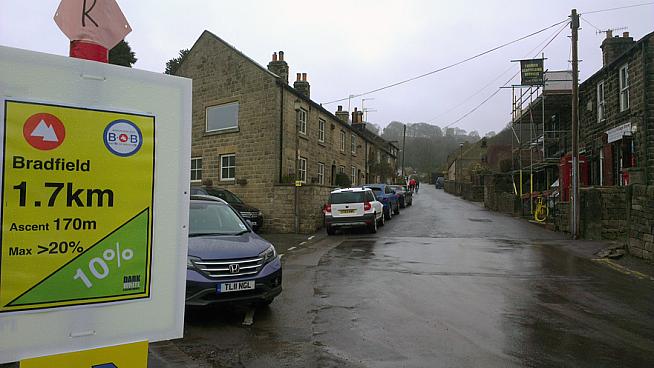
Anyone who watched the second stage of the Tour de France last year would be familiar with the setting for this ride. On the north west outskirts of Sheffield is the Dark Peak area of the Peak District. A dramatically beautiful area marked out by craggy rocks on top of steep hills, deep valleys filled with picturesque reservoirs, and what most cyclists would probably refer to as "extremely challenging" terrain. Although the riders of the professional peloton only skirted through this area before whizzing off to do Jenkin Road and a sprint finish, we were scheduled to spend the whole morning exploring what it had to offer the recreational cyclist.
What I really liked about the way organisers Dark & White prepared you for this was the very detailed road book they produced and made available on the event website. The road book set out a detailed description of the difficulty of each of the 10 climbs that were packed into the 40 mile route, and it really helped build anticipation in the weeks before the ride trying to assess how much of the guide was exaggerated scaremongering and how much was actually true. Here's a sample:
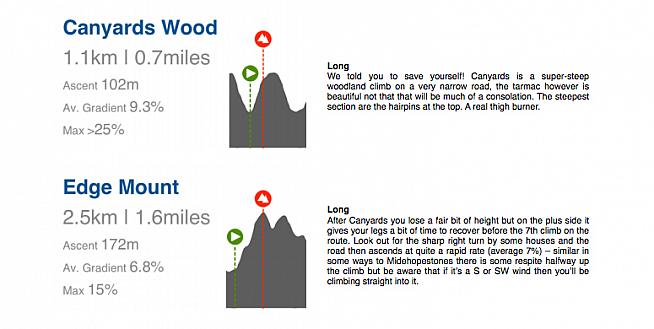
By the day of the ride I had built myself up into believing the hype, and as a result set out with a fair bit of trepidation to the event HQ in Stannington. Once there we were greeted by a long queue to sign on, far in excess of what you find at most sportives. Later we discovered via the Dark and White twitter feed this was due to the Stannington Hall caretaker forgetting to change his watch when the clocks went forward during the night. Unfortunately the majority of the cyclists in the line before me had been paying more attention to the fluctuations of the British time zone, hence the resulting delay.

By the time I set off the weather was looking dicey to say the least. Thankfully it wasn't freezing and there was no sign of snow. However, there was rain about, and one of my fears for the day was that the steep gradient of the climbs combined with wet road surfaces would mean my back wheel spinning when I was out of the saddle. That was something I wanted to avoid so I decided I would try to stay in the saddle as much as I could when tackling the climbs.
Once out on the course we began to realise what a wonderful part of the world for cycling this was. I imagine in most places, the local council fill the odd pothole and fix the worst of the roads on the route before the arrival of the biggest bike race in the world. However, in this part of Yorkshire the authorities had gone above and beyond what might normally be expected and paved the whole area with lovely, velvety smooth tarmac.
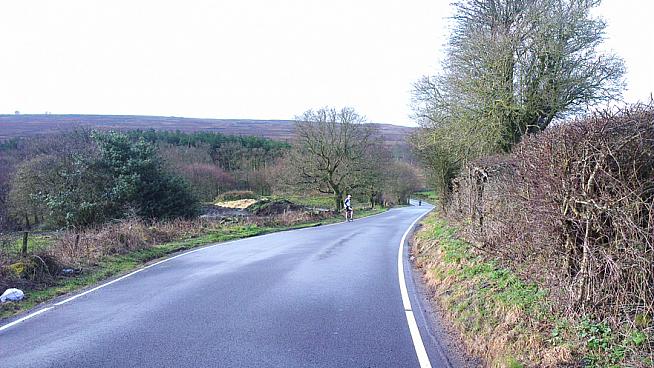
The climbs were short and sharp as expected, but the great road surfacing made them much less arduous than the road book had led us to believe. The descents however were simply a matter of survival, and it took a great deal of nerve to navigate the twists and turns in the wet. The weather did relent for a brief period and we were treated to some magnificent rainbows to add to the already wonderful views.
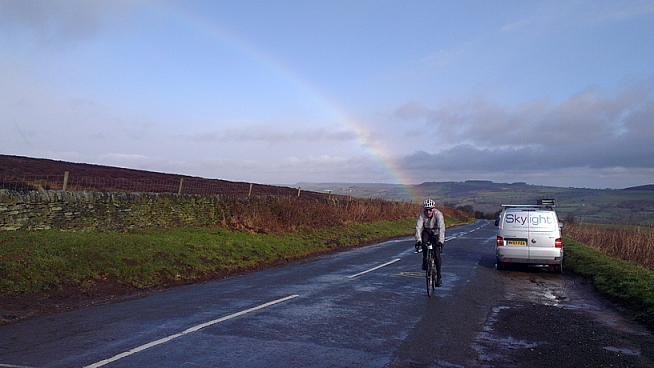
Because it was such a short ride I had foolishly set out with no food to keep me going, thinking that my breakfast of a bowl of Shreddies would suffice until the feed station. But by the time I got there I was soggy, shivering and starving. When I was finally handed an energy bar by the sympathetic lady manning the feed station table it slipped from my numb fingers onto the road, and I instinctively scrabbled to the ground to retrieve the precious sustenance. She kindly tapped me on the shoulder, told me to leave it, and offered me a fresh one which I devoured in a flash.

The highlight of the course was the Cote de Bradfield climb, as defined by the Tour de France eight months before. The fans' writing was still clear on the road, and it offered a mild distraction from the pain in my legs to read the witty musings of Sheffield's graffiti artists on the way to the top which was still marked by the King of the Mountains line.
It was a short ride back to the HQ after that, with only a couple of gentler climbs to negotiate. There was food and hot drinks available to those who needed it, but I was only a few miles from home so decided to miss the refreshments and head back to get out of my wet gear.
The Battle of Bradfield was a great early season ride that the weather failed to spoil. As the weather turns a bit warmer, cyclists in the Sheffield area might like to tackle the course themselves. The B.O.B. road book is still available online, why not take a look for yourself - it'd be a shame to let all that fresh tarmac go to waste...


0 Comments

